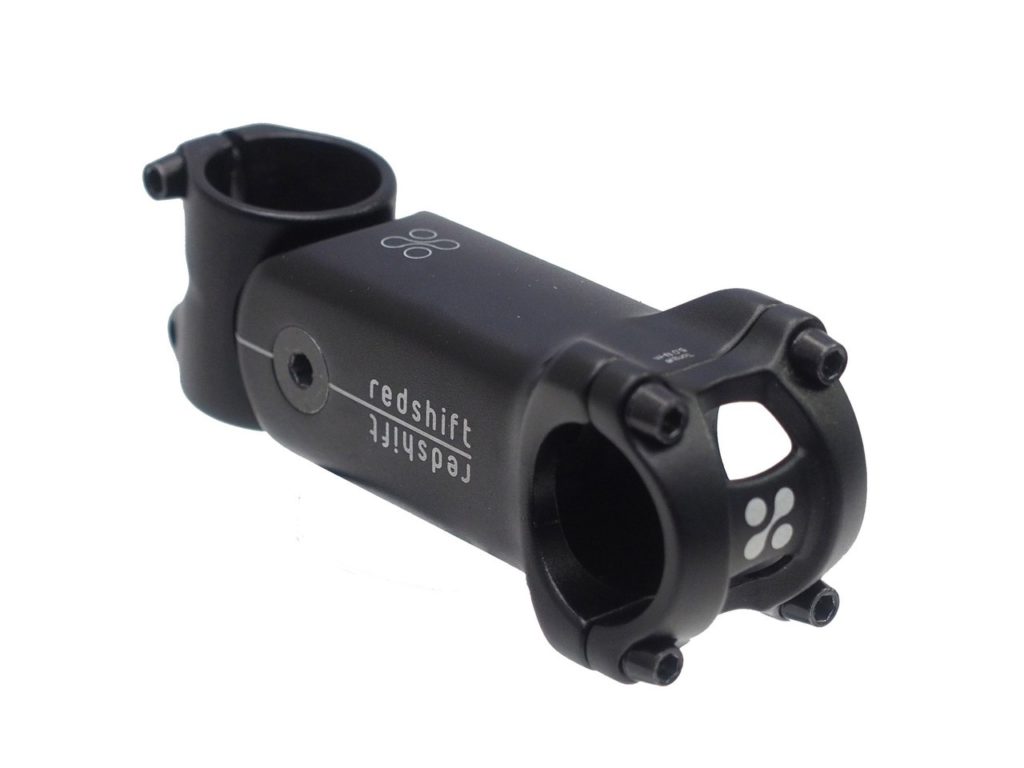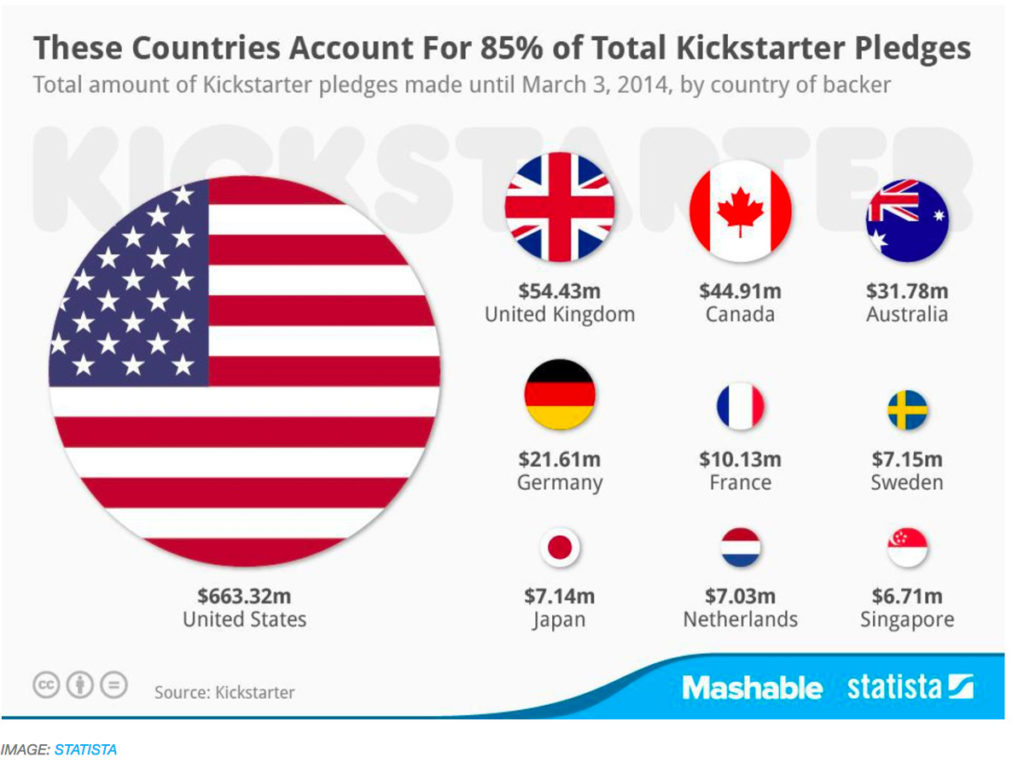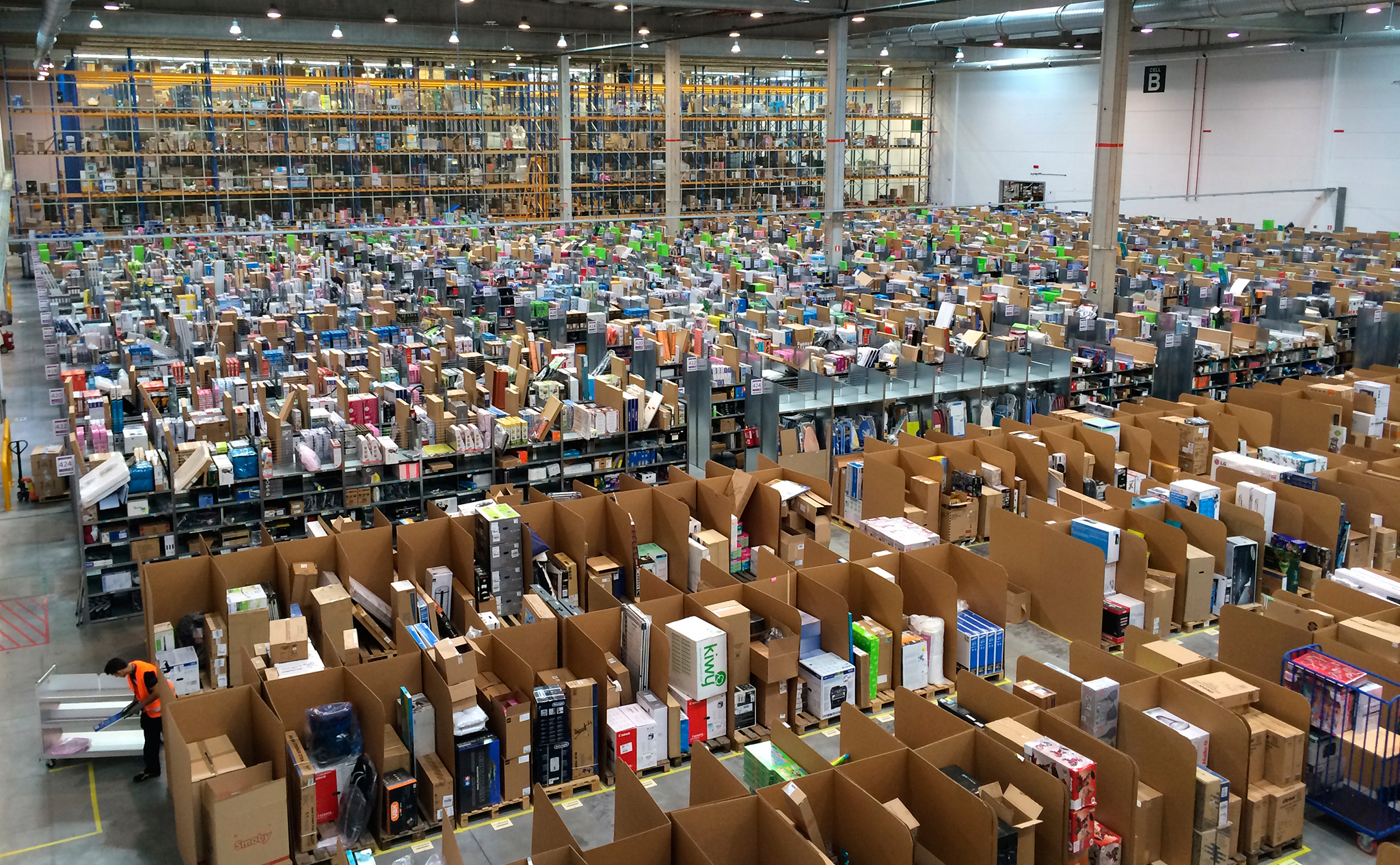Every project creator knows that meeting your funding goal is the first milestone in a crowdfunding marathon. Many more hurdles abound in the fulfillment and shipping phase, particularly for crowdfunding campaigns with a sizable base of international backers.
We spoke to project creators for their tips on how to make international shipping as seamless as possible.
Is International Shipping Worth It?
Two-time project creator and Redshift Sports co-founder Erik de Brun’s most recent Kickstarter campaign was for the Shockstop, a shock absorber for bicycles. “We took the time before running the campaign to make sure we had a means for fulfilling internationally,” he said. “The preparation we did was to get some rough estimates for international shipping costs, identify 3PLs we could work with to handle that international side, and then make sure we were representing the shipping costs in the campaign itself.”

Being able to provide low-cost international shipping to backers is a great drawing card for any crowdfunding campaign, but it takes a lot of preparation to ensure the process is as smooth as possible. A project creator’s capacity to provide international shipping to backers will largely hinge on their financial resources and willingness to explore partnerships with fulfillment centers and 3PLs.
Even though shipping can eat into campaign funds, de Brun says it’s a worthwhile tradeoff. According to BackerKit data, 38 per cent of backers reside outside of the United States. “It’s a benefit we provide as a brand,” de Brun says. “We’re trying to lower the barriers to access. Kickstarter and e-commerce in general have lowered that barrier a fair amount, so we try to do as much as we can.”
Fulfillment Centers and 3PLs
Samantha Rose and Brian Rose, the team behind GIR kitchen utensils and the Voltaire smart grinder, are veteran project creators. They’ve created six campaigns on Kickstarter, all of them successful in meeting their funding goals.
The products they create — unibody silicone spatulas, high-performance coffee grinders, and low-profile bottle stoppers — don’t typically require assembly, but there’s a lot of complexity in their fulfillment workflows. A typical GIR crowdfunding campaign has over 200 SKUs, which can make fulfillment more complicated. With that kind of complexity, you need to be able to communicate with your warehouse to solve problems quickly.

“The ability to make that personal connection with the human beings that are packing your inventory is so valuable,” Samantha says. “We previously worked with a 3PL with much greater scale. There were a lot of benefits to that, but when things went wrong, there was no one to talk to. We couldn’t say, ‘Hey, can you tell us what you’re seeing on the shelf?’” She advises project creators make an in-person visit to their 3PL center and set expectations for the fulfilment phase of their campaign. Her advice is echoed by Podo Labs’ Eddie Lee, who also recommends getting quotes from different 3PL providers and visiting their facilities in person.
At a crowdfunding panel held by BackerKit and Kickstarter earlier this year, GAMAGO co-founder Greg Long emphasized the importance of factoring fulfillment and 3PL logistics costs into your campaign’s cost structure. “If you’re using 3PL, it’s typically going to cost 12% of your wholesale price,” he said. As a result, fulfillment can wind up taking a significant bite out of a project creator’s gross profit. Long noted that partnering with 3PL companies in China or Amazon could help project creators save on distribution costs.
Returns and Lost Packages
Dealing with returns and lost packages can be frustrating for backers and project creators alike. Return policies vary between project creators and can depend on the type of reward or product offered to backers. For hardware makers, having a clearly articulated warranty and returns policy in place is essential. To get an idea of best practices, research similar campaigns or reach out to project creators in similar industries for advice.
Keeping costs as low as possible comes with certain compromises.“Ultimately you can provide very robust shipping services to almost anywhere in the world, but it costs a fair amount of money to do so,” de Brun says. “Especially with crowdfunding, a lot of customers want to pay the least amount they can with shipping. What that means is that it comes with this idea of using economy-type shipping — using USPS and affiliates to deliver packages.” But even carriers with the best reputations can run into problems. “What this means is that you start to give up on tracking stuff,” de Brun says. You may know when a package left the country, but you don’t know what happens when it hits local postal carriers. It becomes a lot more work when it comes to diagnosing problems when they arise.”
As a result, de Brun says the company’s approach to lost packages is focused on the customer. “When someone didn’t get a package, we build this into our cost-of-doing business to resend the package in those cases. We don’t spend a lot of time figuring out how to recover lost packages. We’re focused on getting backers the product.”
All of GIR’s products come with a lifetime warranty. “We tend to be really customer-centric,” Samantha says. There were occasions where there would be discrepancies between what a backer had said and the notification provided by a delivery service. “If the post office says they delivered it — but the customer says they never got it — which side do we take?”
GIR’s policy has always veered toward the customer — and it’s likely to stay that way. “As a creator, these customers engage with us on Kickstarter where there is a leap of faith in the first place because they’re supporting something that doesn’t yet exist,” Samantha says. “The backers take a leap of faith at the beginning of the crowdfunding process. We take a leap of faith at the end of the process by honoring that faith with a no-questions-asked returns policy.” It’s a stance that doesn’t come cheap. “This is probably to our own detriment financially,” Samantha says, “but to our great benefit from a relationship standpoint”.
In GIR’s 2014 crowdfunding campaign for its silicone lid series, there were a “tremendous amount of lost shipments, all of them international”, Brian says. This happened in the company’s early days on Kickstarter, when the learning curve was particularly steep. “We don’t budget for returns or lost shipments because it’s so variable over time. We eat the cost of that upfront,” he says.
This year, GIR have had far fewer lost shipments by taking extra precautions. “We paid for it in advance by pre-emptively upgrading to DHL shipping for troubled shipping zones — places where we’d lost packages in the past, like Israel,” Brian says. Meanwhile, other project creators have had fewer problems with lost packages. Jean Wu, a first-time project creator and cofounder of the Que Bottle, says a relatively small number of packages were lost in the shipping process. “We did have to deal with returns, wrong addresses, and wrong shipments, but these were relatively low — perhaps under 5 per cent,” she says.
The GIR team says budgeting in advance for lost packages is difficult because project creators are locked into the shipping tiers offered through Kickstarter, but over time Kickstarter, GIR and BackerKit have become more experienced and attenuated to the pitfalls of international shipping. “Three or four years ago, there was one shipping rate that could be identified for the US and one for the rest of the world,” Brian says. “Now you can break it down country by country.” He says each campaign keeps getting better “because everyone’s getting more grown up”. It’s especially beneficial for first-time creators, he says, who “don’t have to go through the same growing pains”.
For de Brun, he says he allocates a “small percentage” to lost package costs. “We’re only talking about a handful of packages out of 1,000”, he says. “Delivery services are generally reliable, especially when you are delivering to places with multiple carriers. There are more problems with remote areas or imperfectly translated addresses, and some of the more premium carriers have methods to check whether addresses are valid.”
Which Countries Should I Ship to?
When crafting an international shipping strategy, project creators might consider the countries that pledge the most to crowdfunding platforms and budget for shipping costs accordingly. Alternatively, project creators might want to swing for the fences and create a comprehensive shipping strategy that serves backers in as many different countries as possible.
Wu went for the latter approach. She says she did a lot of research online, and obtained quotes from different fulfillment partners and mailing services. “We compared all of these figures and used them to create a range for our worldwide shipping budget.” Que Bottle’s backers spanned North and South America, Asia, Europe, Oceania, Africa.
Kickstarter and Mashable compiled the statistics on the top ten countries in terms of funds pledged.

Picking Couriers and Mail Services
GIR uses a variety of courier and mail services that are made available through their fulfillment warehouse. “Depending on weight, volume, and destination, we can send packages inexpensively through carriers that use local services for the last mile, although sometimes we are forced to use more door-to-door services like DHL and FedEx,” Brian says. “That’s another area where BackerKit has allowed us to handle with a lot more sophistication than we otherwise might be able to. It makes us more modular.”
Companies like Floship and Shipwire connect third-party logistics firms and couriers to provide warehousing, fulfillment and shipping services. Project creators are able to tailor the delivery of their packages to their needs with a choice of regional, national, and international postal carriers.
Customs and Taxes
Shipping orders to backers in the European Union adds another layer of complexity to the fulfillment process. Import taxes, customs duties, brokerage fees and a 21 per cent value-added tax should be factored into pledge tiers and the total funding goal of campaigns. (Remember that the total cost of shipping may vary within the EU itself.) If you don’t account for all of the costs ahead of time, you risk aggrieving backers, who are likely to bear the costs of an ill-executed EU shipping strategy.
“As a US-based company doing a Kickstarter, it’s great to be able to offer products to international customers,” de Brun says. “And it’s good to offer them at a reasonable shipping cost. International customers have to deal with import duties, sometimes taxes, and if you have big shipping costs on top of that, it’s a turnoff for a lot of people.”
De Brun says affordable worldwide shipping costs is a key part of his company ethos. “We offer free shipping to domestic customers, which is built into our carrying costs. We extend that in a way to our international customers by subsidising the shipping cost they end up paying.”
Most project creators will choose to ship from within the EU to minimize the costs borne by backers, typically partnering with in-country or region-specific fulfillment centers like Amazon.de, Nift, and Spiral Galaxy, to name a few. Click here for a more detailed guide to making your project EU-friendly.
Communicating with Backers
Many queries from backers will pop up during the fulfillment process. Wu says she received and responded to queries from backers through BackerKit, direct emails, as well as comments on the project’s Kickstarter campaign page and Indiegogo InDemand page. She says swift responses are a great way to maintain goodwill and trust between project creators and backers, but cautions against flooding backers with project updates unless it’s important. You might want to consider a project update if there are unforeseen delays in the manufacturing process.
“We responded to comments daily,” Wu says. “But it wasn’t necessary to post too many updates all the time unless it’s a big announcement or it affects a lot of people. We’ve only written 19 updates from the start of our campaign through to fulfillment.” Posting a project update often triggers a new wave of backer comments and emails which creates work for whoever has to respond to backer messages. The BackerKit support team often coordinates with larger projects to time updates so that the staff is ready to handle the support inquiries.
Learning from Past Campaigns
With six campaigns under its belt, it’s unsurprising that GIR runs a pretty tight ship. “We’ve shipped 5,000 packages in the three weeks before Christmas, and 95% arrived in time with the right items in them,” Brian says. “From that perspective, there’s not a whole lot we could do better.” However, he does see room for improvement on international shipping. “It would be nice to find a way to account more granularly for lost packages or difficult places to ship to,” he says. “I think we can better at it over time.”
Meanwhile, Redshift’s de Brun is keen to explore options for warehousing in the future. “Having done two campaigns, a lot of fulfillment, customer service, and shipping, we would keep much of our approach the same,” he said. “But as we grow our business and shift more items internationally, we’re looking for ways to end up warehousing in places where we have a density of shipments, so we can eliminate duties. Ultimately we want to save everyone money in the long run.”
